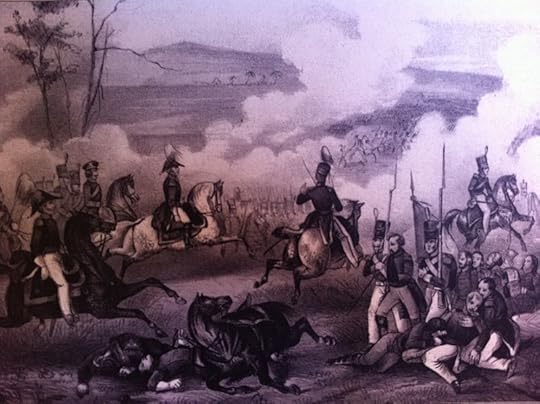Bathroom Readers' Institute's Blog, page 50
November 20, 2017
Let’s Play Some Video Game$$$

At the recently held consumer electronics show E3, Microsoft enraged cash-strapped gamers with an announcement that its latest system, the Xbox One X will cost nearly $500. That’s actually par for the course, because video games are two things: fun…and expensive.
MAGNAVOX ODY$$EY
The first widely available video game system in the U.S. came out all the way back in 1972. The Magnavox Odyssey offered a couple of dozen games, all of them variations on Pong—in other words, basic shapes in black-and-white in which players hit a round dot with a rectangle. (If they wanted color, they could put a plastic sheet on their TV screen.) But the Odyssey was revolutionary for its time, and sold more than 100,000 units…despite a price tag of $99.99. In 2017 dollars, that’s the equivalent of $580.
ATARI’$ 2600
Video games becoming a permanent, lucrative, and popular part of the culture really happened with the introduction of the Atari 2600 in 1977. Graphics were still primitive by today’s standards, but they were better than what the Odyssey offered, with recognizable figures and colors—plus you could play the big arcade games like Space Invaders, Asteroids, and Frogger on it without shelling out quarters. Players just had to shell out up front: The Atari 2600 cost $200, which, adjusted for inflation is a whopping $760.
$NK NEO-GEO
Atari went bust in the mid-1980s, but Nintendo and Sega made home gaming popular and lucrative again in the late ’80s and early ’90s. The Nintendo Entertainment System cost a relatively affordable $100 in 1990 (with two free games), or $179 in 2017 money. That’s relatively affordable when placed up against a new competitor that debuted in 1991. Japanese company SNK’s Neo-Geo console was priced at $650—nearly $1,100 when inflation is taken into consideration. Far more powerful in terms of computing power than the other systems on the market, the Neo-Geo offered an experience similar to that of sophisticated arcade games; in fact, players could save their games on their at-home Neo-Geo, and then continue at a Neo-Geo arcade console. (Why anybody would want to do that is unclear.) The games weren’t cheap either—they cost $150, or more than an entire system made by Nintendo.
The post Let’s Play Some Video Game$$$ appeared first on Trivia Books and Facts | Uncle John's Bathroom Reader.
November 16, 2017
We’re Going to Have to Shoot That Again!

Filming a movie is a very costly and time-consuming endeavor. And sometimes someone in the cast or crew messes up so badly that it eats up even more time and money.
Napoleon Dynamite
Shot on a relatively tiny budget of $400,000 and grossing $45 million, the quirky high school comedy Napoleon Dynamite was the surprise hit of 2004. It opened in June, but could’ve made more money had it been released in May, as was initially planned. Distributor Fox Searchlight delayed it at the last minute because it noticed a mistake in the opening credits that an executive said looked “unhygienic.” On a still shot of star Jon Heder holding a school ID card that read “Napoleon Dynamite,” the actor had a hangnail. The studio made filmmakers reshoot that scene.
Justice League
One of the most anticipated movies of 2017 is Justice League, a superhero team up movie set to feature Superman, Batman, Wonder Woman, Aquaman, and the Flash. Even though it’s set for release in November, it’s not yet completed. Original director Zack Snyder left the movie because of a personal tragedy, and The Avengers director Joss Whedon stepped in. He also is responsible for filming a bunch of new scenes so make the movie better. Not only is that going to cost Warner Bros. $25 million, but they’re going to have to spend money on special effects to digitally remove Henry Cavill’s facial hair. Not thinking he’d have to go back to clean-cut role of Superman so quickly, he grew a mustache for the role in the next Mission: Impossible movie, which he is contractually banned from shaving off.
Spider-Man: Homecoming
One of the most complicated, coveted—and expensive—LEGO sets available is the LEGO Death Star. It’s a representation of the gigantic, artificial weaponized planet from the Star Wars movies. It consists of 4,016 pieces, takes days to fully build…and costs $500. The play-set featured prominently in the recent movie Spider-Man: Homecoming. In the scene in which star Tom Holland reveals that he’s Spider-Man to actor Jacob Batalon, playing his best friend, Batalon was supposed to hold a completed LEGO Death Star and drop it to the ground in shock, shattering it. Except Batalon kept dropping the Death Star at the wrong time. A total of seven were pre-built for the scene, and Batalon went through all of them.
Ronin
In the 1998 action movie Ronin, actor Skip Sudduth insisted on doing his own stunt driving. Director John Frankenheimer allowed it, provided that Sudduth wouldn’t hit the brakes, ever. Why? The brake lights would show up in the shot, and ruin the illusion of a reckless, high-speed car chase. That very expensive car chase scene had to be re-set and reshot over and over because Sudduth kept hitting the brakes.
The post We’re Going to Have to Shoot That Again! appeared first on Trivia Books and Facts | Uncle John's Bathroom Reader.
November 15, 2017
From Champions to Cellar-Dwellers

Here are some teams who defended their titles…by not defending them at all and turning almost explicably bad in the blink of an eye.
The 1998-99 Chicago Bulls
In the 1997-98 season, the Chicago Bulls amassed a record of 62-20, the best in the Eastern Conference. They cruised through the playoffs and in the NBA Finals beat the Utah Jazz in six games. That was the Bulls’ sixth championship in just eight years, all of them thanks to on-court heroics by star player Michael Jordan. But before the next season began, Jordan retired, coach Phil Jackson opted to not renew his contract, and stars like Scottie Pippen and Dennis Rodman were nearing the end of their own stellar careers. Result: The Bulls went 13-37 in that lockout-shortened season the year after winning the NBA title. It was the team’s first time missing the playoffs since before Jordan had joined the team in 1984. In April 1999, the Bulls set a modern-day record for least points scored in a game, losing 82 to 49 to the Miami Heat.
The 1982-83 San Francisco 49ers
The 1981-82 San Francisco 49ers are among the all-time best squads in NFL history. It was the first season that future legend Joe Montana was the team’s starting quarterback, and he was one of six 49ers selected to the Pro Bowl, along with standouts like Dwight Clark and Ronnie Lott. With a regular season record of 13-3, the 49ers marched into the postseason and nearly missed the Super Bowl…if not for Montana’s impossible, touchdown pass to Dwight Clark in the final seconds of the NFC Championship Game. They went on to win the Super Bowl over the Cincinnati Bengals in a 26 to 21 squeaker. The memorable moments didn’t quite continue when play resumed in the fall of 1982. In that strike-shortened season, the 49ers finished with a record of 3-6. They quickly recovered at least, finishing 10-6 in 1983, and at a nearly perfect 15-1 in 1984, on the way to another Super Bowl victory.
The 1997 Florida Marlins
With the Chicago Cubs finally breaking more than a century of championship-less seasons, the Cleveland Indians are now the team with the longest World Series drought—the team last won it all in 1948, nearly 70 years ago. Perhaps the closest the team came to breaking the cold snap was in 1997; they won the AL Central and made it all the way to the World Series. Representing the National League was the wild card team: the Florida Marlins, a team that had only joined the big leagues just four years earlier. The Marlins took the favored Indians to the full seven games…and dramatically won it all in the 11th inning when Edgar Renteria drove a runner home with a tricky infield single. The scrappy Marlins weren’t quite in “dynasty-building” territory quite yet, however. In 1998, the team went from the highest highs of the World Series to the lowest lows of the NL East standings. the team finished with a record of 54-108, the worst in all of baseball, and one of the worst in baseball history.
The post From Champions to Cellar-Dwellers appeared first on Trivia Books and Facts | Uncle John's Bathroom Reader.
November 14, 2017
It’s a Monopoly!

There are a lot of laws around the world preventing one company from controlling the market for a single product…but that doesn’t mean it doesn’t still happen.
ZIPPERS
Are you wearing a zip-up sweatshirt or a pair of jeans? Look closely at the zipper (we’ll wait). It very likely has a small “YKK” embossed on it. That stands for “Yoshida Kogyo Kabushikikaisha,” a family-owned company founded in Tokyo in 1934. It’s a huge company — it operates more than 200 factories around the world and makes all kinds of fasteners and industrial goods. But it’s no. 1 product is zippers. More than 90 percent of all zippers in the world are manufactured at one of those many YKK plants.
TOOLS
When you’re at the hardware store picking up some power tools or home improvement supplies, you’ll probably buy something produced by Stanley, whether you’re aware of it or not. The tool giant merged with another tool giant, Black & Decker, in 2010, joining forces to dominate the hammer, saw, and drill industry. Both companies had already bought up other brands before combining, and now all of these and more are under one corporate roof: Craftsman, Irwin, DeWalt, Mac Tools, Bostools, and Husky. The company now known as Stanley Black & Decker, Inc. also own a bunch of security system, lighting, lock, and bathroom fixture companies.
PAPER DRINK CONTAINERS
If you’ve ever bought and consumed a packaged drink—such as a juice box or a carton of milk— it probably came in a container made by Tetra Pak. A division of a Swedish company called Tetra Laval, it’s the biggest food packaging company in the world, thanks to its creation, development, and spread of paper cartons coated with plastic, and aseptic packaging. The company’s drink-holding technology can be used to store, ship, and preserve any number of foods.
The post It’s a Monopoly! appeared first on Trivia Books and Facts | Uncle John's Bathroom Reader.
November 13, 2017
Cold and Flu Myths

It ’s cold and flu season, so your head and nose are probably already clogged. Let us help you clear at least your brain by demystifying some commonly believed mistruths about colds and flus.
Myth: You can catch a cold or the flu by going out in cold weather without a coat or hat, or with wet hair.
Truth: viruses cause Colds and flus — not cold air or exposure to the elements.
Myth: A flu shot can make you sick.
Truth: Some flu vaccines might make you feel a little weird in the hours or days after they get injected into your arm. You might experience headache, a slight fever, and other early flu symptoms. But then they go away. If you do get sick after you’ve been vaccinated, the flu shot isn’t what made you sick — you picked up a cold, or a strain of flu that the vaccine didn’t address. Or the flu virus was already in you when you got the shot, and the vaccine hadn’t taken effect yet.
Myth: Stomach flu is a type of flu.
Truth: A nasty bug that leads to vomiting and diarrhea isn’t actually a type of influenza. It’s gastroenteritis.
Myth: Over-the-counter cold remedies shorten the duration of a cold.
Truth: Not really. A cold lasts a full seven to 10 days, with the severity of symptoms lessening over time. All cold pills do is help you manage the day-to-day symptoms of the sickness.
Myth: The common cold is a single, specific, communicable illness.
Truth: Getting a cold is common, but the sickness called “the cold” is not. Each year, different (but similar) strains descend on the population, only to mutate and return…and get people sick all over again. There are about 100 different viruses in circulation referred to as “the cold.”
The post Cold and Flu Myths appeared first on Trivia Books and Facts | Uncle John's Bathroom Reader.
November 9, 2017
QUIZ: The Forgotten Wars

#fca_qc_quiz_35740 button.fca_qc_button {
background-color: #58afa2;
box-shadow: 0 2px 0 0 #3c7d73;
}
#fca_qc_quiz_35740 button.fca_qc_button:hover {
background-color: #3c7d73;
}
#fca_qc_quiz_35740 div.fca_qc_answer_div.fakehover,
#fca_qc_quiz_35740 div.fca_qc_answer_div:active {
background-color: #8dc8bf;
}
The Forgotten Wars Quiz
On Veterans Day, we pay tribute to the brave men and women who served in every
branch of the U.S. military. Here’s a quiz about some conflicts and missions
from American history that have faded away from public consciousness.

Start Quiz
Question
[image error][image error][image error][image error][image error][image error]
Your answer:
Correct answer:
NextYou got {{SCORE_CORRECT}} out of {{SCORE_TOTAL}}
[image error]SHARE YOUR RESULTSTweetPinEmailYour Answers
The post QUIZ: The Forgotten Wars appeared first on Trivia Books and Facts | Uncle John's Bathroom Reader.
Did Van Gogh Cut Off His Own Ear?

Self-Portrait with Bandaged Ear (1889) is one of Vincent van Gogh’s most recognizable paintings The bandaged right side of his face has fascinated art historians for decades—some believe he only sliced the earlobe, while others wonder if the wound was not selfinflicted at all. (This article was first published in Who Knew?)
An Earful of Truth

A letter found in an American archive, and penned by Van Gogh’s doctor, Félix Rey, includes a diagram showing how the artist severed almost his entire ear, leaving a small part of the lobe intact. In 2009, a number of historians claimed that fellow painter and houseguest Paul Gauguin had sliced off Van Gogh’s earlobe in a sword fight. The injury described in Rey’s notes, however, is consistent with the theory that a razor blade was used and that it was not an accident.
Downward Spiral
It is clear from his letters that Van Gogh suffered from bouts of depression, and it is thought that he cut off his ear after a dispute with Gauguin (the two men did not reconcile) or because he was unhappy that his brother was to be married. Either way, shortly after the incident Van Gogh was committed to the hospital for a time. In the years since his posthumous rise to fame, doctors have been diagnosing him with conditions such as bipolar disorder, lead poisoning, epilepsy, and thujone poisoning caused by the large quantities of absinthe he drank.
The Not-So-Lucky Recipient
For many years it was widely believed that Van Gogh had gifted his severed ear to a sex worker named Rachel who resided in Arles, the French city that was Van Gogh’s home for the last yearof his life. But recent research has revealed that after the incident on December 23, 1888, Van Gogh made the aural offering to Gabrielle Berlatier, a young woman who worked as a maid at a brothel on Rue du Bout d’Arles. Not long before, she had been bitten by a rabid dog but survived after receiving a newly developed vaccine in Paris, where chemist Louis Pasteur had set up a special clinic to study and treat rabies. The cure was expensive, leaving her farming family in debt, which explains why she was working as a maid. She went on to marry and live to an old age, her encounter with the artist kept secret until long after her death.
The post Did Van Gogh Cut Off His Own Ear? appeared first on Trivia Books and Facts | Uncle John's Bathroom Reader.
Real, Rare, and Amazing Conditions

If you could have a superpower, what would it be? Flight? Super-strength? An imperviousness to cholesterol?
Tetrachromatism
A condition called tetrachromatism enables a person to see more of the color spectrum than the rest of us. Those with it can notice more subtle shades of colors, even within a single object; something may appear red to most people is a whole slew of reddish shades to a person with tetrachromatism. They can see an estimated 100 times more colors than the average human.
Distichia
Elizabeth Taylor is certainly the most famous person ever diagnosed with distichia. Rather than sprout from their usual place on the eyelid, eyelashes grow from some other spot around the eye. Or, as was the case with Taylor, in addition to their usual place. The film star had double eyelashes, which only served to accentuate her famously violet-colored eyes.
Primary Familial and Congenital Polycythemia
Finnish cross-country skier Eero Mantyranta won seven Olympic gold medals between 1960 and 1972. In 1972, he admitted to “doping”—taking hormones to improve his performance, although they weren’t banned by the International Olympic Committee at the time. Nevertheless, he had a genetic condition called primary familial and congenital polycythemia, which gave him a competitive edge. A mutation in his erythropoietin receptor gene made his bloodstream hold 1.5 times the amount of oxygen that another person’s bloodstream would. All that extra oxygen meant he didn’t get tired as easily, and could ski for much longer and at faster speeds than the other guy.
Hyperthymesia
Another celebrity example of a remarkable condition: Marilu Henner. The Taxi star is one of only about two dozen people ever confirmed to have a complete and total photographic memory, or hyperthymesia. She can recall specific, precise, and minute details about her life on any given day from her lifetime. Scientists think the condition results from an enlarged temporal lobe and caudate nucleus in the brain.
PCSK9
People with a very rare problem with the PCSK9 can eat all the extremely fatty, cholesterol-laden food they want. The body lacks enough copies of the gene in question, which is responsible for helping to absorb and process dietary fat and cholesterol. That means cholesterol just doesn’t affect them, and that their risk of developing heart disease is around 90 percent less than that of the general public.
The post Real, Rare, and Amazing Conditions appeared first on Trivia Books and Facts | Uncle John's Bathroom Reader.
November 7, 2017
How Long Ago Did Cosmetic Surgery Begin

Transforming the human body through surgery for aesthetic reasons is nothing new. While surgical procedures today are far more advanced, healers, doctors, and even barbers had been performing cosmetic procedures for centuries before the recent surge in popularity for plastic. (This article was originally published in Who Knew? )

Ancient Healers
Plastic surgery gets its name from the Greek word for these types of procedures: plastikos, meaning “molding.” It’s believed early Indian communities widely experimented with shaping parts of the body, particularly the nose, for aesthetic effect. One of the first people to record these cosmetic procedures was an Indian healer known as Sushruta. Scholars believe he lived at some point between 1000 and 600 BCE, and today we know much of his medicine from Sushruta Samhita, a 184-page compendium of the healer’s teachings, surgeries, and medical practices. Among these writings, Sushruta described reconstructive methods for different defects, including rhinoplasty—or nose jobs—using a pedicled forehead flap. After this was published in the Gentleman’s Magazine of Calcutta in 1794, it began to be used more widely in Europe. This technique is still known today as the Indian flap.
Necro Nip and Tuck
It’s believed that Egyptians were averse to performing surgical procedures to alter the face of the living, as they believed your appearance would be the same in the afterlife, and that you should therefore remain as nature intended while you were alive. They did, however, make some modifications to corpses to emphasize prominent features. Ramses II’s nose had a small bone and a handful of seeds inserted into it, and bandages were inserted into the cheeks and bellies of other mummies—scholars believe this was to make these features more prominent and therefore recognizable in the afterlife.
No Easy Job
Fifteenth-century rhinoplasties, performed long before the advent of anesthesia and hygienic hospital practices, were described by Heinrich von Pfolspeundt in his 1460 work, Buch der Bundth-Ertznei. A model of the nose was constructed from parchment or leather; this was then positioned on the forearm and traced. The marked area of arm skin was cut around, leaving the bottom of the new nose flap attached. The patient’s raised arm would be bound to their head, with the nose flap positioned in place. The patient would then spend up to ten days with their arm attached to their nose before the skin flap was cut and the nostrils constructed.
The post How Long Ago Did Cosmetic Surgery Begin appeared first on Trivia Books and Facts | Uncle John's Bathroom Reader.
How to Win at Rock, Paper, Scissors

Here are some theories on how to be the best at the only game that matters.
Psychological Factors
Professor Zhijian Wang of Zhejiang University in China led a study that revealed psychological factors in how people play Rock, Paper, Scissors—which a competitor in the know could use to their advantage. The Zhejiang group discovered that people don’t randomly throw out a rock, paper, or scissors during a game, even if they aren’t aware that they do.
The Study
360 test subjects were split up into groups of six and each played 300 rounds of Rock, Paper, Scissors in random pair-ups. While winning is glorious and good, the stakes were raised and test subjects were further motivated by a small cash prize offered for each game won. As they played, subjects were observed as to how they rotated through which option they chose, especially as they won or lost multiple games in a row. The findings: If a player won with one option, they were much more likely to use that same choice in the following game. For example, John’s rock beats Jay’s paper. In the next game, John would probably go for a rock again, as it had served him well.
Conversely, if a player loses two or more times in a row, that is when they are most likely to switch up what they throw. And when they do, they’ll go for the choice that just beat them. Say that Jay loses to John, who once again used his rock to beat Jay’s scissors. If that happened several times in a row, Jay is highly likely to switch to rock. This is all falls under a bit of game theory called the “win-stay, lose-shift strategy.”
Real World Applications
So how can you use all this information in a real-world Rock, Paper, Scissors game? Well, say you lose the first round to your friend. On the next round, switch to the option they used that just beat you. And then, if you won, experts say, you can get a jump on your opponent by immediately switching to the thing that would beat the choice you just played—in other words, your opponent’s losing hand. For example, your rock beat their scissors. They’re likely to switch to paper, so you should switch to scissors. You win again!
World Rock Paper Scissors Society
The World Rock Paper Scissors Society, which is a thing, offers up another piece of strategy. The organization says that inexperienced or players who aren’t thinking too heavily, will almost always start with a rock. Their research shows that it’s especially true for novice male players, as the rock is thought to be the “strongest” option. That means their opponent should always start with paper, because paper beats rock.
The post How to Win at Rock, Paper, Scissors appeared first on Trivia Books and Facts | Uncle John's Bathroom Reader.











